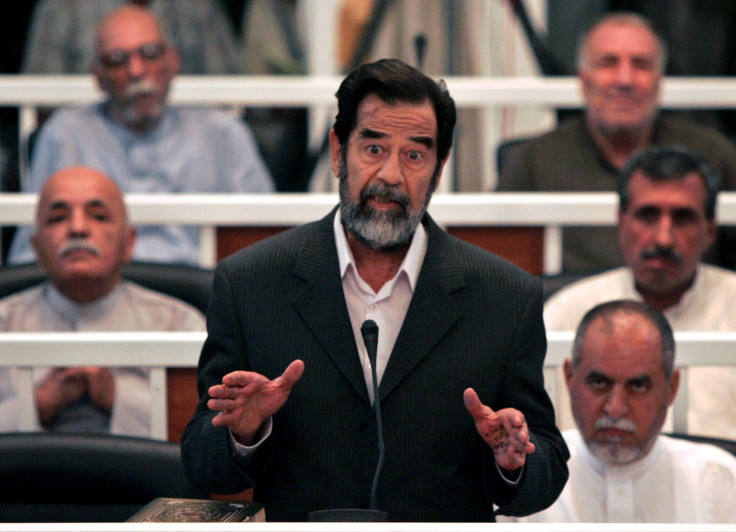Why Is Iraq At War? Saddam Hussein Was Executed 10 Years Ago For Crimes Against Humanity, But Violence Continues

Friday marks the tenth anniversary of former Iraqi leader Saddam Hussein’s execution after an Iraqi tribunal tried and found him guilty of crimes against humanity. Hussein, who assumed power in 1979, was unseated in March 2003 after a U.S.-led invasion, triggering years of heightened sectarian strife and power struggles at the highest levels of Iraqi government.
The dictator, 66 at the time, and leader of the now-defunct Arab Socialist Ba’ath Party was captured in December 2003, and a tribunal established by a coalition government guided by the U.S. charged him with premeditated murder, forced deportations and torture among other things. The massacres included the 1982 slaughter of Shias in Dujail town and the 1988 Halabja massacre, in which Hussein was accused of using chemical weapons against a Kurdish town that attempted to revolt against him.
The former Iraqi leader, aged 69, was executed shortly after 6 a.m. local time (10 p.m. EST) on Dec. 30, 2006, in northern Baghdad, over a year after his trial began in October 2005.
Mowaffak al-Rubaie, Iraq’s national security adviser at the time, was present at the execution and said Hussein was “strangely submissive” to the process.
“He was a broken man,” Rubaie said at the time. “He was afraid. You could see fear in his face.”
Former President George W. Bush called the execution “an important milestone” in building a democracy in Iraq.
“It is a testament to the Iraqi people’s resolve to move forward after decades of oppression that, despite his terrible crimes against his own people, Saddam Hussein received a fair trial,” Bush said at the time. “It is an important milestone on Iraq’s course to becoming a democracy that can govern, sustain, and defend itself, and be an ally in the War on Terror.”
However, sectarian violence escalated in the country in early 2006 as Sunni, Shia and Kurdish factions clashed, and hundreds have been killed or displaced over the years by the violence, including multiple terror attacks from al Qaeda in Iraq, which eventually transformed into the Islamic State group, or ISIS.
ISIS eventually took advantage of a security vaccuum created by the exit of American troops in December 2011 and inadequately trained government security forces. The Sunni militant group eventually expanded to control large swathes of territory in northern Iraq. When ISIS stormed Mosul in 2014 and then moved south toward Baghdad, at the peak of its power, nearly 10 million Iraqis lived under its control.
Currently, a long-running operation by a U.S.-led coalition to defeat the Sunni militant group has reached a head in Mosul, which is Iraq’s second-largest city and a major ISIS stronghold.
© Copyright IBTimes 2024. All rights reserved.






















